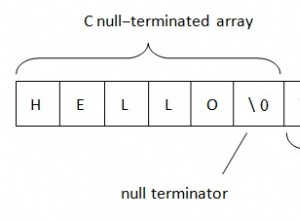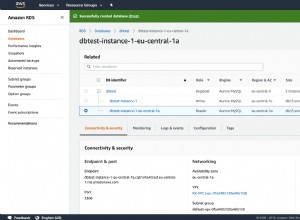Musisz zidentyfikować grupy kolejnych dni, w których oos =1 lub 0. Można to zrobić za pomocą funkcji LAG, aby sprawdzić, kiedy zmienia się kolumna oos, a następnie zsumować ją.
with x (s_date,qty,oos,chg) as (
select s_date,qty,oos,
case when oos = lag(oos,1) over (order by s_date)
then 0
else 1
end
from stk
)
select s_date,qty,oos,
sum(chg) over (order by s_date) grp
from x;
wyjście :
| S_DATE | QTY | OOS | GRP |
|--------------------------------|-----|-----|-----|
| January, 01 2013 00:00:00+0000 | 0 | 1 | 1 |
| January, 02 2013 00:00:00+0000 | 0 | 1 | 1 |
| January, 03 2013 00:00:00+0000 | 0 | 1 | 1 |
| January, 04 2013 00:00:00+0000 | 5 | 0 | 2 |
| January, 05 2013 00:00:00+0000 | 0 | 1 | 3 |
| January, 06 2013 00:00:00+0000 | 0 | 1 | 3 |
Następnie możesz zsumować te oos, podzielone według kolumny grp, aby uzyskać kolejne oos dni.
with x (s_date,qty,oos,chg) as (
select s_date,qty,oos,
case when oos = lag(oos,1) over (order by s_date)
then 0
else 1
end
from stk
),
y (s_date,qty,oos,grp) as (
select s_date,qty,oos,
sum(chg) over (order by s_date)
from x
)
select s_date,qty,oos,
sum(oos) over (partition by grp order by s_date) cum_days_oos
from y;
wyjście:
| S_DATE | QTY | OOS | CUM_DAYS_OOS |
|--------------------------------|-----|-----|--------------|
| January, 01 2013 00:00:00+0000 | 0 | 1 | 1 |
| January, 02 2013 00:00:00+0000 | 0 | 1 | 2 |
| January, 03 2013 00:00:00+0000 | 0 | 1 | 3 |
| January, 04 2013 00:00:00+0000 | 5 | 0 | 0 |
| January, 05 2013 00:00:00+0000 | 0 | 1 | 1 |
| January, 06 2013 00:00:00+0000 | 0 | 1 | 2 |
Demo w sqlfiddle.




